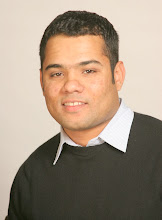Busy 2 Weeks of Speaking Engagements….
During the next 2 weeks, I will be giving several talks and presentations. Here are a few: 1. [June 9-11]: I will be chairing a panel discussion on innovation at the 2008 Seattle Innovation Symposium (June 9-11) at the University of Washington. The panel will debate a simple, yet critical, question – Does size matter in respect to sustained innovation? For the panel, I will draw on a completed research project that examined challenges faced by incumbent firms when trying to build sustainable innovation programs. This project was conducted as part of the i4i research program [Click for more details...]
1. [June 9-11]: I will be chairing a panel discussion on innovation at the 2008 Seattle Innovation Symposium (June 9-11) at the University of Washington. The panel will debate a simple, yet critical, question – Does size matter in respect to sustained innovation? For the panel, I will draw on a completed research project that examined challenges faced by incumbent firms when trying to build sustainable innovation programs. This project was conducted as part of the i4i research program [Click for more details...] 2. [June 15-18]: I will be giving a talk based on my book, Managing Knowledge Security (Kogan Page, 2007), at the Annual Meeting of the Special Libraries Association. My talk is organized by the Competitive Intelligence and Pharmaceutical and Health Technology Divisions of the SLA and is generously sponsored by Thomson Scientific...
2. [June 15-18]: I will be giving a talk based on my book, Managing Knowledge Security (Kogan Page, 2007), at the Annual Meeting of the Special Libraries Association. My talk is organized by the Competitive Intelligence and Pharmaceutical and Health Technology Divisions of the SLA and is generously sponsored by Thomson Scientific...
Can You Keep a Secret? How to Keep Your Competitors from Learning What You Know, Wed June 18, 12:15 p.m. - 1:45 p.m
[Click for more details…] [To order the book...Click here...]
3. [June 17-19]: I will be giving two talks at the 13th International Command and Control Research and Technology Symposium. Along with Sumit Roy and Yuan Lin, I will present a paper, Performance Measures for Edge Organizations: A Preliminary Report. With Joaquin Herranz and Sumit Roy, I also have another paper that will be presented at the conference - Coordination Strategies for  Edge Organizations. [Click for more details]. The abstracts of both papers are provided below:
Edge Organizations. [Click for more details]. The abstracts of both papers are provided below:
Edge Organizations: A Preliminary Report (Desouza, Roy, and Lin)
Taking an information-processing view of organizations, we address the need for building a robust set of performance measures for Edge Organizations (EOs). Alberts and Hayes in Power to the Edge: Command, Control in the Information Age conceptualized EOs as information-intensive entities whose performance is directly related to their ability for agile information processing. We ask the question, “How can we measure the information-processing capacities of EOs?” To this end, in this research-in-progress paper, we examine (1) the technical dimension of information flows, (2) the human-dimension of information flows, and (3) the socio-technical dimension of information flows. The technical dimension represents movement of information between two machine nodes and can be informed by drawing on performance measures for telecommunications network theory. The social dimension represents the movement of information between two human nodes for which we examine the literature on social networks for performance measures. Finally, the socio-technical dimension represents movement of information between human and technical nodes or vice versa. To develop measures for these information flows we must not only extend and customize the performance measures from telecommunications networks and social networks, but also draw on measures in the disciplines of decision sciences, information sciences, and organizational science, among others
Coordination Strategies for Edge Organizations (Herranz, Desouza, and Roy)
This paper provides a critical analysis of coordination strategies related to Alberts and Hayes’ (2003) conceptualization of Edge Organizations (EOs). According to Alberts and Hayes (2003), EOs offer a high-contrast alternative form of coordination when compared to hierarchical structures for command and control (C2). In this view, EOs resemble networks in their form and in their decentralized, adaptive, and dynamic functioning. This paper examines and extends current theoretical understanding of coordination strategies for EOs by providing a three-part analytical critique. The first part examines the EO concept from the critical perspective of organization theory. The second part questions the notion of EOs as an archetypical network form that is best able to combat terrorist organizations. We argue that terrorist organizations represent a range of organizational forms rather than a single network form. Consequently, EOs should likewise represent an adaptive range of organizational forms and coordination strategies. The third part provides a conceptual framework that builds upon the previous critiques and identifies a range of coordinating strategies for EOs that would enable leaders to use an analytical model in determining the strategic and operational trade-offs associated with different coordination strategies in multi-actor complex endeavors. We argue that the effectiveness and efficiency of the EO is related to its coordinating strategy. Consequently, the EO needs to be agile enough to choose the right coordinating strategy given the conditions of its internal and external environments. The internal environment includes the work and task allotments, while external environment considers the issues of coalition partners, goals, strategies, etc. Our paper contributes to building a more robust EO framework by providing a critical analysis of coordination strategies related to Alberts and Hayes’ (2003) re-conceptualization of military organizations as EOs

No comments:
Post a Comment